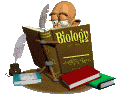A. The Importance of
Carbon
1. Organic chemistry
is the study of carbon compounds
2. Carbon atoms are the most versatile building blocks of
molecules
3. Variation in carbon skeletons contributes to the diversity
of organic molecules
B. Functional Groups
1. Functional groups
also contribute to the molecular diversity of life
a. hydroxyl group and
alcohols
b. carbonyl group and aldehydes and ketones
c. carboxyl group and carboxylic acids
d. amion groups and amines
e. sulfhydryl group and thiols
f. phosphate groups
C. Polymer Principles
1. Most macromolecules
are polymers
2. A limitless variety of polymers can be built from a small
set of monomers
D. Carbohydrates: Fuel
and Building Material
1. Sugars
a. smallest carbohydrates
b. serve as fuel and carbon sources
2. Polysaccharides
a. polymers made of
sugars
b. storage and structure
E. Lipids: Diverse Hydrophobic
Molecules
1. Fats store large amounts
of energy
2. Phospholipids are major components of cell membranes
3. Steroids include cholesterol and certain hormones
F. Proteins: The Molecular
Tools of the Cell
1. A polypeptide is a
polymer of amino acids connected in a specific sequence
2. A protein's function depends on its specific conformation
G. Nucleic Acids: Informational
Polymers
1. Nucleic acids
store and transmit hereditary information
2. A nucleic acid strand is a polymer of nucleotides
3. Inheritance is based on replication of the DNA double helix
4. DNA and proteins can serve as tape measures of evolution

